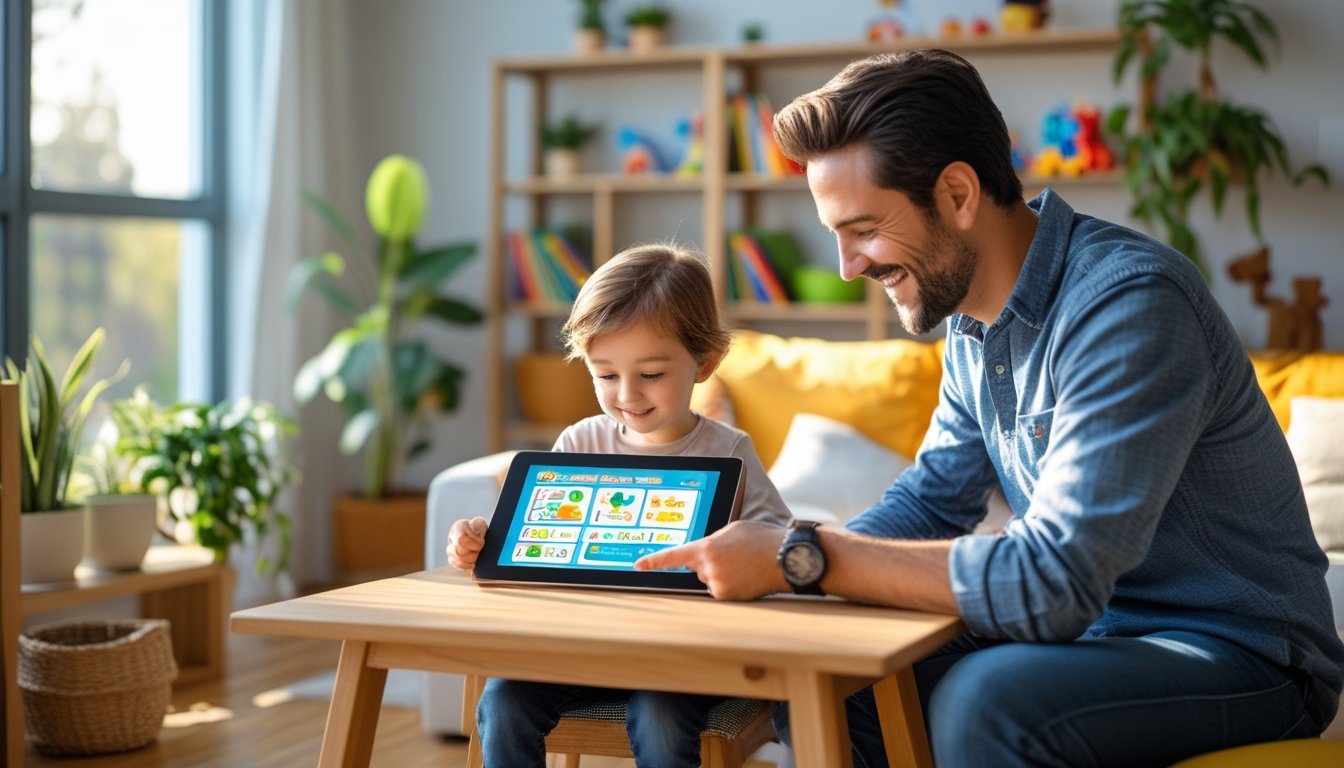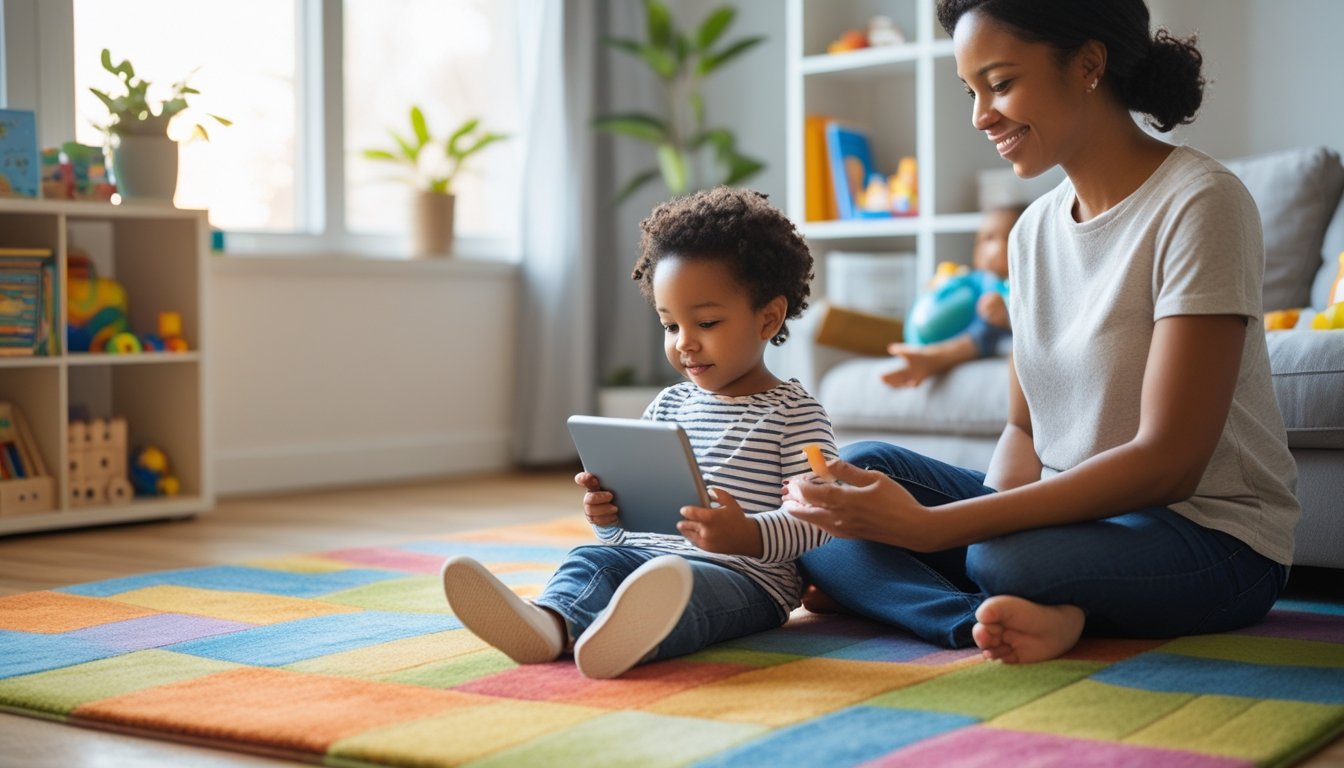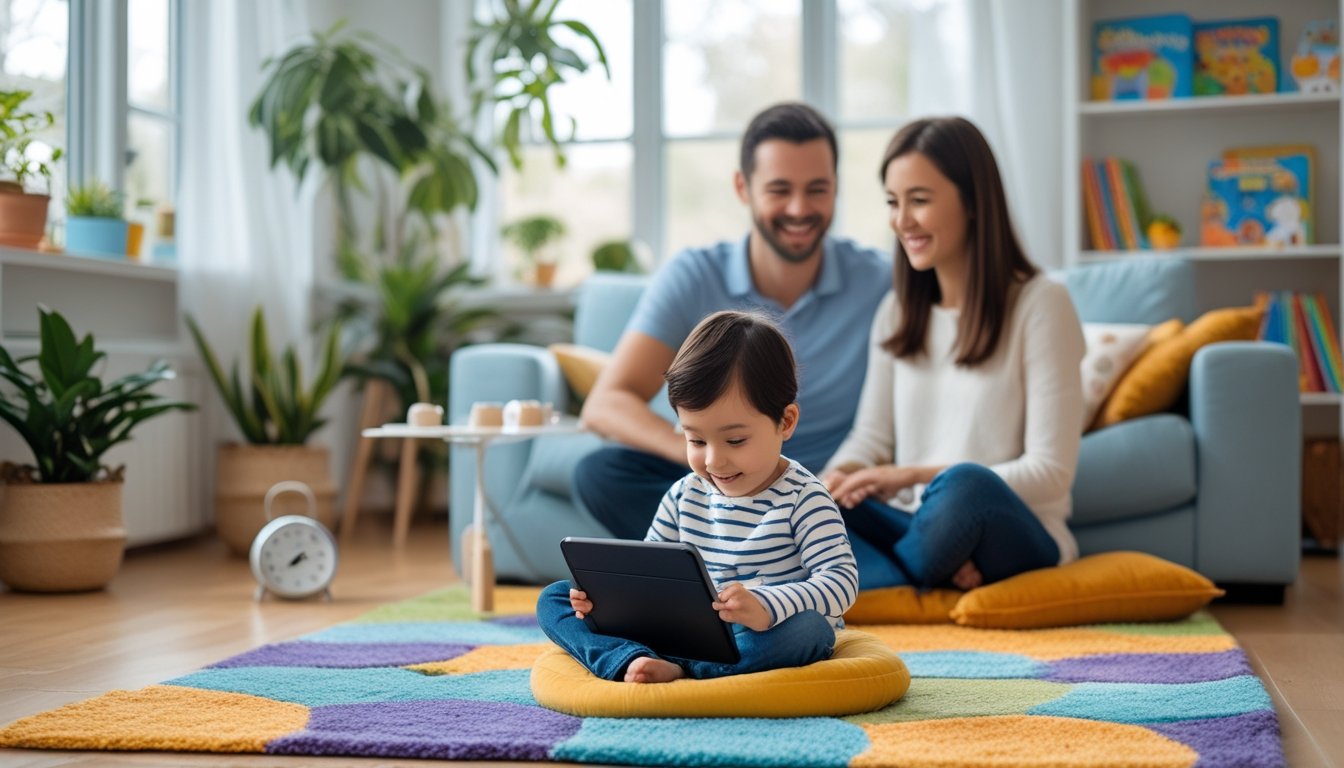Late updated: 15 May 2025 11:05
Written by:
Encouraging Healthy Screen Time Habits For Children: Strategies and Tips
In today's digital age, screen time is inevitable, but it’s essential to ensure children develop healthy habits around it. Helping our children establish limits on screen usage can significantly impact their wellbeing and development. By focusing on a balance of activities, we guide them in growing physically, mentally, and socially.

We must lead by example, as children learn by observing their surroundings. Creating screen-free zones at home encourages our kids to explore alternative activities that enrich their minds and bodies. Offering positive reinforcement when they stick to these limits will further motivate them.
Key Takeaways
- Set realistic screen time limits
- Encourage diverse activities
- Lead by example
Foundations of Healthy Screen Time for Children
Encouraging healthy screen habits for children involves understanding the impact of screen time, setting practical routines, recognising age-appropriate technology use, and promoting digital literacy. Each of these foundations plays a crucial role in ensuring that children benefit from technology without experiencing its potential drawbacks.
Understanding Screen Time and Its Impact
Screen time is a significant part of modern childhood, but its effects can vary widely. Understanding its impact helps us manage it effectively. Excessive use can lead to issues such as reduced physical activity, sleep disturbances, and impact on social skills. Conversely, mindful use can support learning and creativity. By educating ourselves on the effects of screen time, we can make informed decisions about what's best for our children.
A 2019 study indicated that interactive content, like educational programs, can benefit cognitive development. On the other hand, passive consumption, such as watching TV without engagement, might not have the same positive effects. Balance and moderation are key to promoting healthy screen habits.
Setting Practical Boundaries and Routines
Establishing practical boundaries and routines for screen time is vital. Creating a family media plan can outline daily or weekly limits, ensuring a balance between digital and non-digital activities. Consistency is essential. For example, setting tech-free times, such as during meals or before bedtime, encourages other activities like reading and social interaction.
We suggest using parental controls to manage usage effectively. These tools can help limit access to inappropriate content and ensure that the time spent online is both productive and safe. It's important that boundaries are flexible enough to adapt as children grow and their needs change.
Recognising Age-Appropriate Technology Use
Recognising what is age-appropriate for children is crucial in promoting healthy screen time habits. Younger children benefit from interactive and educational applications, whereas older children might be ready for more diverse media. Assessing content appropriateness ensures that what our children consume is beneficial to their growth.
We must be proactive in discussing media content with children, guiding them to make choices that align with family values and educational goals. Encouraging critical thinking about online content aids in developing their self-regulation skills and online behaviour.
Promoting Digital Literacy and Online Safety
Promoting digital literacy and online safety equips children to navigate the digital world responsibly. It involves educating them about internet safety, privacy concerns, and the importance of respectful online behaviour. By fostering an understanding of digital citizenship, we prepare them to handle online interactions and challenges.
Discussing the risks of sharing personal information online is vital. We must teach children to recognise credible sources, helping them to discern reliable information from misinformation. Incorporating digital literacy into regular discussions and activities empowers children to make safer choices online, laying the foundation for responsible digital habits.
Balanced Activities and Encouraging Mindful Tech Use

In today's digital age, it's important for us to guide children in developing balanced screen time habits. This includes blending technology use with physical activities, fostering creativity, encouraging social interactions, and promoting mindfulness and digital wellness.
Integrating Physical Activity and Outdoor Play
Balancing screen time with physical activity is vital for children’s health. We can encourage activities like sports, daily exercises, and outdoor play to promote physical well-being. Organising family outings or setting up simple backyard games can make exercise enjoyable.
Creating a schedule that includes regular breaks from screens for movement and fresh air ensures kids stay active. Tech-free zones at specific times help drive focus on outdoor activities. Incorporating these into daily routines nurtures healthy habits and enhances both physical fitness and mental health.
Fostering Creativity, Reading, and Hobbies
Encouraging children to engage in reading and exploring hobbies can reduce excessive screen dependency. Artistic activities such as drawing or music allow for creative expression without digital interference. Reading books not only enhances vocabulary but also stimulates imagination and critical thinking.
We should encourage our children to read regularly and explore diverse hobbies. Setting up a hobby corner at home stocked with materials for crafts or musical instruments provides an inviting space for creativity. This diversifies interests and reduces the need to rely solely on digital entertainment.
Encouraging Face-to-Face Social Interaction and Family Time
Face-to-face interactions are crucial for developing social skills. Family meals are a perfect opportunity for us to put devices away and engage in meaningful conversation. Planning tech-free family activities such as board games or local community events strengthens relationships and fosters bonding.
Social gatherings with friends in a tech-free environment also teach kids to interact without screens. Co-viewing digital content as a family allows us to discuss topics, promoting critical thinking and understanding of healthy internet use. Balancing digital interactions with real-life connections is key.
Supporting Mindfulness and Digital Wellness
Practising mindfulness can enhance digital wellness by teaching awareness of our technology use. Introducing activities such as meditation or reflection journals helps develop self-control and awareness of digital habits. Mindful tech use can include setting specific goals for screen activities, like learning or creativity.
We should also discuss online safety and cyberbullying, ensuring our children feel safe and informed. Encouraging regular dialogues about their media experiences helps build trust and aids responsible digital behaviour. Setting time limits for gaming or social media ensures balanced use and supports good sleep hygiene.
Frequently Asked Questions

Parents often seek guidance on establishing healthy screen time habits for children. It's important to set age-appropriate guidelines, model appropriate behaviour, and be aware of the impacts excessive screen time can have on development. Below, we explore questions related to these aspects.
What are the recommended screen time guidelines for children of various ages?
For children under two, it is generally advised to avoid screens altogether. Preschoolers may have up to an hour of screen time, focusing on high-quality programming. Older children should have consistent limits that ensure they're balancing screen use with physical activity and sleep.
How can parents effectively teach children to manage their screen time?
We suggest setting clear rules and expectations about screen use. Active discussions with kids about the purpose and goals of their screen activities can foster self-regulation. Encouraging device-free zones or times helps everyone in the family focus on face-to-face interaction.
What strategies can be implemented to ensure kids develop healthy screen time habits?
Leading by example is powerful. If we manage our screen time well, our children are likely to imitate this behaviour. Setting up a family media plan can clarify expectations and offers a platform to discuss any concerns. Encouraging outdoor play and regular breaks from screens can promote balance.
What are the negative impacts of excessive screen time on children's development?
Excessive screen time can interfere with sleep and physical activities, potentially leading to obesity or delayed cognitive development. It might contribute to behavioural issues or difficulties in maintaining attention. We must recognise these risks and strive to establish healthier screen practices.
How can the '3 C's of screen time' be integrated into children's daily routine?
The '3 C's' refer to Content, Context, and Child. Quality content suited to our children's needs should be chosen. We should consider the context of screen use, ensuring it's not replacing critical activities like homework. Observing how each child interacts with screens allows us to tailor guidelines appropriately.
What rules can parents set to regulate their child's use of screens at home?
Device-free zones, such as the dinner table, encourage family interaction. Enforcing screen-off times, particularly during homework or bedtime, helps set boundaries reflecting the importance of non-screen activities. Engaging children in setting these rules makes them more likely to adhere to them.
